
New Photos
January 1, 2006
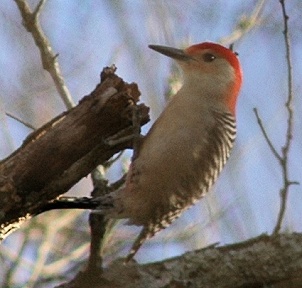 |
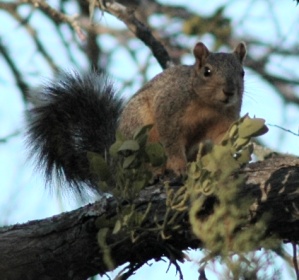 |
| Red-bellied woodpeckers live in the creek woods year 'round, but they're easiest to see in winter, when the leaves are off the trees. They're named for the smudgy patch of faded red on the belly, which is hard to see. | All our squirrels are eastern fox squirrels. The mating season is in winter, so right now they're all busy chasing each other through the trees. |
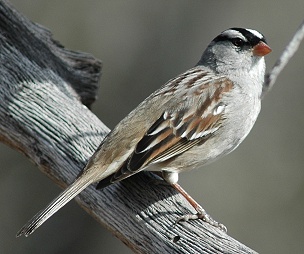 |
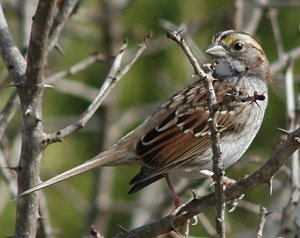 |
| Sometimes you get lucky and a bird poses in exactly the right light, holding still long enough for a good portrait--like this white-crowned sparrow. | This white-throated sparrow posed on the same day, just a few minutes later. Note the yellow patch just in front of the eye--that's one of the easiest ways to identify this sparrow, which is shyer than the white-crowned. |
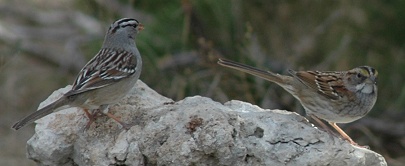 |
|
| When they're together, as here, the white-crowned look grayer, and the white-throated browner--the white-throated has a bright white bib outlined in dark, where the white-crowned has a pale pearl-gray throat and breast. | |
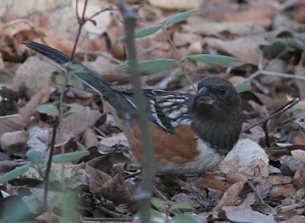 |
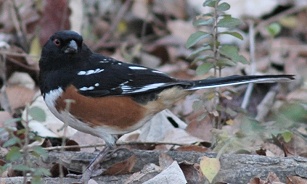 |
| The female spotted towhee is even shyer than the male, who usually comes out to feed first. She is iron gray instead of black, and her russet sides are slightly faded compared to the male's. | Towhees stay in thick brush or in the undergrowth in the creek woods, skulking along in the best cover. They come out in the open only early in the morning or at dusk. This is the male, a rich glossy black on the head and back, marked with white. The russet-orange sides are about the color of the brightest robin's breast. |
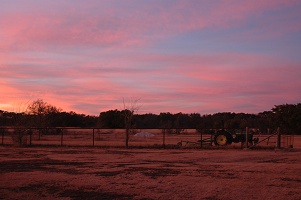 |
|
| Sunset, December 28, 2005 | |
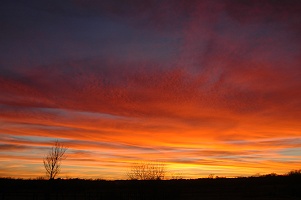 |
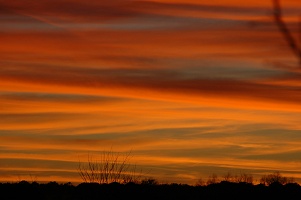 |
![]()

